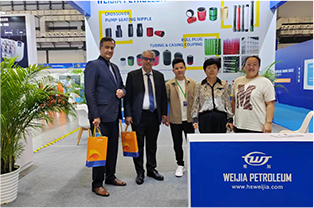- Afrikaans
- Albanian
- Amharic
- Arabic
- Armenian
- Azerbaijani
- Basque
- Belarusian
- Bengali
- Bosnian
- Bulgarian
- Catalan
- Cebuano
- Corsican
- Croatian
- Czech
- Danish
- Dutch
- English
- Esperanto
- Estonian
- Finnish
- French
- Frisian
- Galician
- Georgian
- German
- Greek
- Gujarati
- Haitian Creole
- hausa
- hawaiian
- Hebrew
- Hindi
- Miao
- Hungarian
- Icelandic
- igbo
- Indonesian
- irish
- Italian
- Japanese
- Javanese
- Kannada
- kazakh
- Khmer
- Rwandese
- Korean
- Kurdish
- Kyrgyz
- Lao
- Latin
- Latvian
- Lithuanian
- Luxembourgish
- Macedonian
- Malgashi
- Malay
- Malayalam
- Maltese
- Maori
- Marathi
- Mongolian
- Myanmar
- Nepali
- Norwegian
- Norwegian
- Occitan
- Pashto
- Persian
- Polish
- Portuguese
- Punjabi
- Romanian
- Russian
- Samoan
- Scottish Gaelic
- Serbian
- Sesotho
- Shona
- Sindhi
- Sinhala
- Slovak
- Slovenian
- Somali
- Spanish
- Sundanese
- Swahili
- Swedish
- Tagalog
- Tajik
- Tamil
- Tatar
- Telugu
- Thai
- Turkish
- Turkmen
- Ukrainian
- Urdu
- Uighur
- Uzbek
- Vietnamese
- Welsh
- Bantu
- Yiddish
- Yoruba
- Zulu
perforated pup joints
Understanding Perforated Pup Joints in Oil and Gas Industry
Perforated pup joints are specialized pieces of equipment used in the oil and gas industry, primarily in drilling and completion operations. These joints play a crucial role in the functionality and efficiency of various well interventions. Understanding the significance of perforated pup joints involves examining their design, applications, and advantages.
Design and Specifications
A pup joint is essentially a short length of pipe used to connect two other components in a well system. When we refer to perforated pup joints, we are specifically discussing joints that feature a series of holes or slots along their length. These perforations allow for the flow of fluids while minimizing pressure drop and enhancing the overall efficiency of the system.
Typically made from strong, high-grade materials such as steel or special alloys, perforated pup joints are designed to withstand the high pressures and corrosive environments often encountered in oil and gas extraction. The diameter and length of pup joints can vary based on the specific requirements of the operation, ensuring compatibility with existing equipment.
Applications
Perforated pup joints are primarily used in completion assemblies, including the installation of well screens and gravel packs. Their perforations allow for effective fluid movement, which is essential during the production phase of drilling. These joints facilitate the entry of hydrocarbons into the wellbore while preventing sand or other formation particles from entering and causing blockages.
perforated pup joints

They are also commonly used in workover operations, where existing wells are maintained or enhanced. In such activities, perforated pup joints can be introduced to improve the well's efficiency, allowing for enhanced flow rates and better management of reservoir pressure. Additionally, they can be utilized in hydraulic fracturing operations, facilitating the controlled flow of fracturing fluids to maximize hydrocarbon recovery.
Advantages
The use of perforated pup joints offers several advantages. First and foremost, their design significantly improves fluid flow characteristics, leading to increased production rates. The perforations allow for a more even distribution of pressure, which helps maintain optimal flow conditions within the well. This is especially important in high-yield reservoirs where maximizing output is critical.
Moreover, perforated pup joints reduce the likelihood of drawdown and formation damage. By allowing for a more controlled flow of fluids, they help protect the integrity of the surrounding formation, thus enhancing the longevity and productivity of the well. The durability of materials used in their construction also means that they can withstand the rigors of the drilling environment, reducing the need for frequent replacements and maintenance.
Conclusion
In summary, perforated pup joints are a vital component in the oil and gas industry, providing essential functionality in various operations. Their ability to enhance fluid flow and protect well integrity makes them indispensable in maximizing production efficiencies. As technology continues to evolve, the design and application of these joints will likely see further advancements, further reinforcing their significance in the pursuit of energy resources. Understanding their role and advantages is crucial for professionals involved in drilling and completion activities, ensuring successful and sustainable oil and gas extraction.
-
Tubing Pup Joints: Essential Components for Oil and Gas OperationsNewsJul.10,2025
-
Pup Joints: Essential Components for Reliable Drilling OperationsNewsJul.10,2025
-
Pipe Couplings: Connecting Your World EfficientlyNewsJul.10,2025
-
Mastering Oilfield Operations with Quality Tubing and CasingNewsJul.10,2025
-
High-Quality Casing Couplings for Every NeedNewsJul.10,2025
-
Boost Your Drilling Efficiency with Premium Crossover Tools & Seating NipplesNewsJul.10,2025







